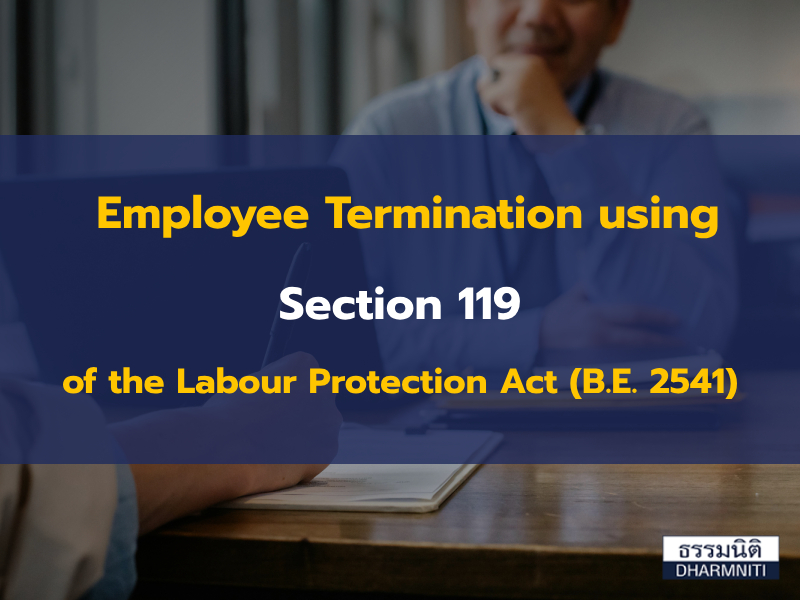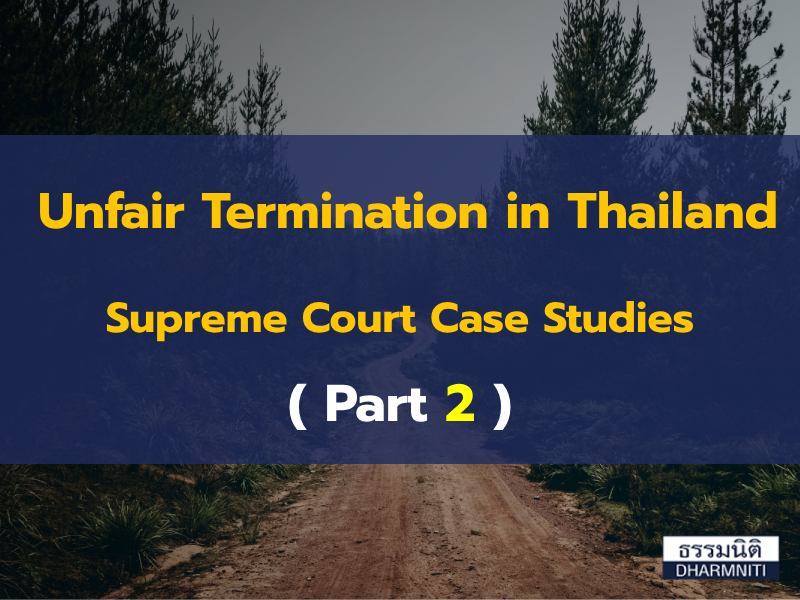Review of Act on the establishment of and Procedure for Labour Court (1979)
In this article, we shall examine key aspects of the Act on the Establishment of and Procedure for Labour Court (1979) (the “Act”), we shall look at a number of important features of this legislation including the legal jurisdiction of the Court (i.e. what kinds of issues/matters can it decide upon), judgments of the court, some of the powers of the Court when hearing cases and details concerning where a labour case should be filed.
Jurisdiction of the Labour Court:
Section 8 of the Act sets out the jurisdiction of the Labour Court, ‘jurisdiction’ in this context refers to the extent of power of the Court to make legal decisions and judgments. According to this section, the legal issues which the court is permitted to hear and decide upon are as follows:
(1) disputes concerning the rights or duties under an employment agreement or under the terms concerning the state of employment;
(2) disputes concerning the rights or duties under the law relating to Labour Protection Act or the Labor Relations Act;
(3) cases where the rights must be exercised through the court according to the Labour Protection Act or the Labor Relations Act;
(4) cases of appeal against a decision of the competent official under the law relating to labor protection or of the Labor Relations Committee or the Minister under the law relating to labor relations;
(5) cases arising from the grounds of wrongful acts between the employers and the employees in connection with a labor dispute or in connection with the performance of work under an employment agreement;
(6) labor disputes which the Minister of the Interior requests the labor court to decide in accordance with theLabor Relations Act;
If a case is brought to the Labour Court which involves issues/matters which fall outside of those listed above then the Court will lack the necessary authority to hear them given the jurisdictional limitations as provided in this section.
Powers of the Labour Court
This piece of legislation gives the Labour Court considerable power to ensure that justice is served when it hears labour law cases. Some examples of these wide reaching powers include:
- The power to shorten or extend a period of time which is prescribed in the Act or fixed by the labor court, provided that when ordering such change, the Court must be of the view that it is necessary and in the interest of justice (section 26);
- The power to order that the Labour Court’s proceedings be conducted at the place where the cause of action arises or any other place, however section 28 provides that this power can only be used in an appropriate case. The writer would like to note that the word ‘appropriate’ is not clarified in the Act hence this is a weakness of this section as it is unclear as to when this power can be used and what would constitute an ‘appropriate case’ which would justify the exercise of this power.
- The power to call any knowledgeable person or expert to appear before it and give their opinion to the Court for its consideration (section 30).
- If the Labor Court is of the view that any act of a party does not comply with any proper step or is in violation of the provisions on the Labour Protection Act or the Labor Relations Act, the Court is empowered to order such party to perform or not to perform any act in accordance with such laws. Moreover, if a party fails to comply with such order then the Court has the power to order their detention in custody until such order has been complied with, provided that such period of detention does not exceed a period of six months.
- The power to order that compromise/ mediation negotiations between the parties to a dispute are held in camera (privately – in the presence of the parties only).
- Before the labor court delivers its judgment or order, it has the power to order that the trial be continued if it considers it appropriate to do so, based on the interests of justice (section 50).
Filing a Case with the Labour Court (Location of Court) & Transferring a Case to a Different Labour Court
Before filing a lawsuit with the Labour Court, the Plaintiff should be mindful of section 33 of the Act which provides that a labor plaint (lawsuit) must be filed with the labor court within the territorial jurisdiction of where the cause of action arose (i.e. the Labour Court overseeing the area where the employee worked).
However, the plaintiff may be permitted to file their plaint (lawsuit) with a labor court in the area where they or the defendant lives, however to be permitted to do this, the plaintiff must prove to the Court that such change in court location will be convenient.
It is also worth noting that before judgement is handed down or the case is disposed of, a party to a labour court case is permitted (providing that they have a suitable and necessary reason) to request the Court to transfer their case to a different labor court. If the Court considering the reason finds that it is suitable and appropriate, it may grant such request, provided that it first obtains the consent of the other labor court in relation to such case transfer. However, if the other labour court refuses to give its consent to this transfer the labor court which first heard the case may submit the matter to the Chief Justice of the Central Labor Court for his decision which shall be final. One weakness of this section is that it fails to provide guidelines or clarification on what would be a suitable and necessary reason to justify the transfer of a case to a different labour court in Thailand, for example if the employee (plaintiff) moved provinces to take up work in a different area of Thailand, would this be a suitable and necessary reason to justify a change in the court hearing the case?
Key Points regarding Judgments of the Labour Court:
The Act provides that a judgment or order of the labour court must be made in writing and must state or specify the following matters:
- The facts of the case as described in brief;
- The ruling/decision of the Court on the contested issues; as well as
- The grounds for the Court’s decision.
The Labor Court must send a copy of its judgment or order to the Department of Labor without delay following the pronouncement of its judgment in a case. Moreover, the Labor Court when giving its judgment must not order anything which is in excess of or not specified in the plaint (lawsuit) except where the Court deems it appropriate and in the interest of justice to both parties to give judgment or issue an order which provides relief which is in beyond that sought by the plaintiff in the plaint (lawsuit).
Should you require any legal support relating to labour law then please contact us on Tel: (66) 2680 9710, Email: ryan@dlo.co.th or info@dlo.co.th. Please also note that from 1 March 2017 our office address will change to 2/2 Bhakdi Building 2nd Floor, Wireless Road, Lumphini, Pathumwan, Bangkok 10330.




 Except where otherwise indicated, content on this site is allowed to be used under
Except where otherwise indicated, content on this site is allowed to be used under